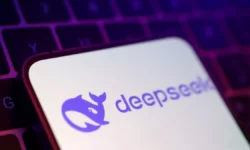Introduction to Data Science Careers

What is a Data Scientist?
A data scientist is more than just a number cruncher. Think of them as the detectives of the digital world…
Why Data Science is in High Demand
Data science is often called the “sexiest job of the 21st century”—and for good reason…
Types of Data Scientist Jobs

Industry-Specific Roles
Healthcare
In healthcare, data scientists are revolutionizing how we diagnose, treat, and prevent disease…
Finance
In finance, data scientists are key to risk analysis, fraud detection, and algorithmic trading…
E-commerce
E-commerce is a playground for data scientists. Every click, scroll, and purchase generates data…
Specialized Roles
Machine Learning Engineer
This role bridges software engineering and data science…
Data Analyst vs. Data Scientist
While both roles deal with data, data analysts focus more on descriptive analytics…
NLP and Computer Vision Experts
These are highly specialized data scientists…
Skills Required to Become a Data Scientist

Technical Skills
Programming Languages (Python, R)
Python is the industry standard thanks to its rich ecosystem…
Data Manipulation & Analysis
You need to be comfortable with libraries like pandas (Python) or dplyr (R)…
Soft Skills
Communication
Data scientists must communicate complex findings to non-technical audiences…
Business Acumen
You must understand the business context behind the data…
Educational Pathways and Certifications
Formal Education
Degrees (BS, MS, PhD)
While it’s possible to break into data science without a degree…
Online Courses & Bootcamps
Platforms like Coursera, edX, and Udacity offer excellent data science courses…
Certifications That Add Value
While not mandatory, certifications from reputable platforms can boost your credibility…
Building a Data Science Portfolio

Importance of a Strong Portfolio
A portfolio showcases your skills far better than a resume…
What to Include in Your Portfolio
Kaggle Competitions
Kaggle is a great platform for beginners and pros alike…
GitHub Projects
Keep your projects organized and public on GitHub…
Crafting the Perfect Data Scientist Resume
Key Elements to Highlight
Your resume is your first impression—it should scream “I can turn data into dollars.”…
Tailoring Your Resume for Different Roles
Not all data scientist roles are created equal…
Common Mistakes to Avoid
- Too Much Jargon
- Listing Every Tool
- No Metrics or Impact
Where to Find Data Scientist Jobs
Top Job Boards and Websites
- Indeed
- AngelList
Niche Platforms for Data Science
- Kaggle Jobs
- DataJobs.com
- AIJobs.net
Leveraging Social Media and Networking
Jobs often come from people, not postings…
The Data Scientist Job Interview Process

What to Expect During Interviews
Most data scientist interviews follow a multi-step process…
Technical Interviews and Coding Challenges
These usually test programming, SQL, ML concepts, etc…
Behavioral and Case Study Interviews
These evaluate soft skills and business acumen…
Salary Expectations and Career Growth
Average Salary by Experience Level
| Experience | Average Salary |
|---|---|
| Entry-Level | $80,000 – $110,000 |
| Mid-Level | $110,000 – $140,000 |
| Senior-Level | $140,000 – $180,000+ |
Salary by Industry and Location
| Industry | Salary |
|---|---|
| Tech | $140,000 |
| Finance | $135,000 |
How to Increase Your Earning Potential
Specialize, get certified, negotiate, and stay current…
Remote Work and Freelancing as a Data Scientist
Opportunities in the Gig Economy
Freelancing has exploded in the data science world. With remote work becoming the norm, companies are more open to hiring freelance data scientists for short-term projects or contract roles. Startups, agencies, and even large enterprises look for specialists who can jump in quickly, build models, and deliver insights—without long hiring processes.
Best Platforms for Freelance Data Science
- Upwork: Great for building a reputation and finding consistent work.
- Toptal: More selective but offers high-paying gigs.
- Fiverr: Good for smaller projects like dashboards or reports.
- Kolabtree: Ideal for scientific and research-focused data work.
Pros and Cons of Freelancing
Pros: Flexibility, diverse projects, control over workload.
Cons: Income instability, no benefits, requires self-discipline.
Freelancing can be rewarding, but it demands strong time management, marketing, and client communication skills. It’s not just about coding—it’s about running a one-person data business.
Tools & Technologies in the Data Scientist’s Toolkit

Core Languages and Libraries
Python Stack
Python reigns supreme in data science. Libraries like NumPy, pandas, scikit-learn, TensorFlow, and PyTorch are essential for everything from data wrangling to deep learning.
R Ecosystem
R is favored in academic and statistical settings. Tools like tidyverse, caret, and Shiny make data exploration and dashboarding intuitive.
Development Environments
- Jupyter Notebooks – Great for experiments and sharing code.
- VS Code / PyCharm – Best for production-quality scripts.
Data Storage and Processing
- SQL – Still the foundation of data retrieval.
- Spark & Hadoop – Handle big data workloads.
- NoSQL (MongoDB, Elasticsearch) – Useful for unstructured data.
MLOps and Deployment Tools
Knowing how to move models to production is key. Learn Docker, MLflow, FastAPI, and cloud services like AWS SageMaker or Azure ML.
Visualization and BI Tools
Use Matplotlib, Seaborn, or Plotly for custom visualizations. For dashboards, tools like Tableau, Power BI, and Looker dominate the business side.
Real-World Projects and Case Studies

Customer Churn Prediction in SaaS
This classic case study shows how companies use machine learning to identify customers likely to cancel subscriptions. Models like logistic regression, decision trees, and XGBoost are common here.
Demand Forecasting for Retail
Retailers use time-series models like ARIMA, Prophet, and LSTM to predict future sales, manage inventory, and reduce waste.
Recommendation Systems
E-commerce platforms rely on collaborative filtering and content-based algorithms to personalize shopping experiences. Netflix and Amazon are the gold standard.
NLP for Customer Support
Natural Language Processing powers ticket classification, sentiment analysis, and chatbots. Tools like spaCy, NLTK, and Hugging Face Transformers are common here.
Common Challenges and How to Overcome Them
Messy Data and Fragile Pipelines
Real-world data is often incomplete, inconsistent, or outdated. Using tools like Great Expectations for validation, and DVC for dataset versioning, helps make pipelines more robust.
Stakeholder Communication
Many projects fail due to poor alignment. Learn to ask the right business questions, explain your models clearly, and deliver value through actionable insights—not just cool charts.
Proving ROI and Impact
Data science is not about fancy models—it’s about results. Define KPIs early, run A/B tests, and measure post-deployment impact. Always tie your work back to business outcomes.
Conclusion, Next Steps, and FAQs
Your 90‑Day Roadmap
Start by mastering Python, SQL, and basic statistics. Build 3–5 solid projects and publish them on GitHub. Begin applying to internships or entry-level roles. Consistency matters more than perfection.
Long-Term Career Strategy
Focus on becoming a T-shaped data scientist—broad general skills with one deep specialization (e.g., NLP, time-series, or MLOps). Stay curious and keep learning—this field evolves fast.
FAQs
- Do I need a master’s degree to get hired? No, but it helps. A portfolio can sometimes outweigh a degree.
- How many projects should I include in my portfolio? At least 3 strong ones with clear business value.
- Which language is better—Python or R? Python is more widely used in industry, but R is great for statistics.
- How do I switch from data analyst to data scientist? Focus on machine learning, build models, and start solving predictive problems.
- What’s the best way to prepare for interviews? Practice coding (LeetCode, HackerRank), review ML theory, and work on business case questions.




